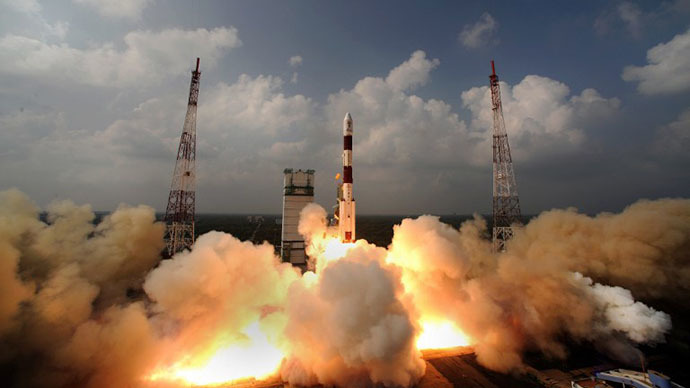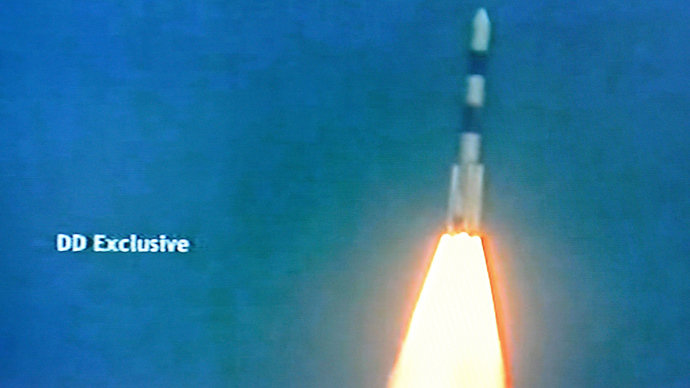An Indian spacecraft bound for the Red Planet has left Earth’s atmosphere, set for a 300-day mission to Mars. The probe will cost $72 million, and the spacecraft should reach its destination on September 24, 2014.
The spacecraft is called the Mars Orbiter Mission (MOM), also
known as Mangalyaan, and will cruise some 680 million kilometers.
The probe has completed six orbits around Earth before Sunday's
"slingshot", which now has launched it on a route around the sun
with Mars as the final destination. The shot requires precise
calculations otherwise the new orbit may be missed.
Earth orbiting phase of the #Mangalyaan ended & now is on a course to encounter Mars after a journey of about 10 months around the Sun.
— Mars Orbiter Mission (@Mangalyaan1) November 30, 2013
The spacecraft was launched on November 5, and
has been rising higher and higher into the Earth’s orbit, with a
series of progressive engine burns. On November 11, there was a
problem with maneuvers during which the spacecraft fell short of
its intended mark.
Mission control has now planned a mid-course correction of the
spacecraft’s course.
"We have planned right now four mid-course corrections; first one will be around December 11 - plus or minus a couple of days depending on the deviation," the NDTV news channel reported V. Koteswara Rao, ISRO [Indian Space Research Organization]'s scientific secretary, as saying.
"You have to slow the spacecraft down once it gets close to
Mars, to catch the orbit, but you can't wait until Mars is in the
field of view to do it - that's too late," said Mayank Vahia,
a professor in the astronomy and astrophysics department of the
Tata Institute of Fundamental Research in Mumbai.
Among experiments the mission will conduct is a search for
methane gas in the Red Planet's atmosphere as well as study the
planet's surface and mineral composition.
On Earth, most atmospheric methane is produced by living
organisms. The gas has previously been detected in the Martian
atmosphere by orbiting spacecraft and by telescopes on Earth.
However, NASA's rover Curiosity recently failed to find the gas
in its atmospheric measurements.
The Red Planet has been a focus of researchers’ attention for
some time, but the world has witnessed an interest spike
recently. Fewer than half of missions to the planet are
successful, however.
About two weeks ago, billionaire Dennis Tito, revealed December 2017 as the date two astronauts
will be dispatched to the Red Planet as part of his long-standing
scheme.
Also a fortnight ago, NASA successfully launched its Maven orbiter into space from Cape
Canaveral, Florida.


